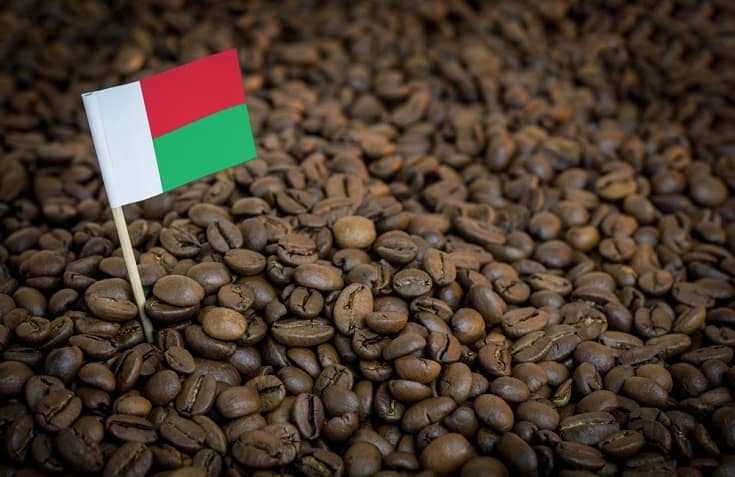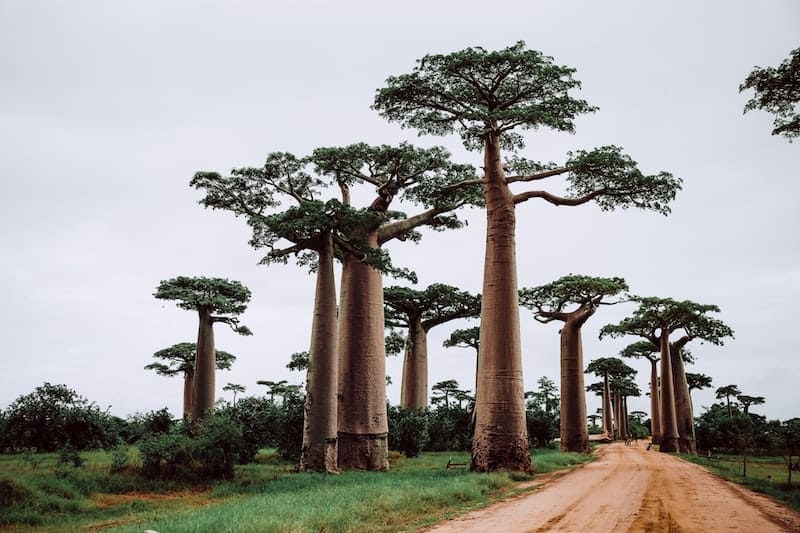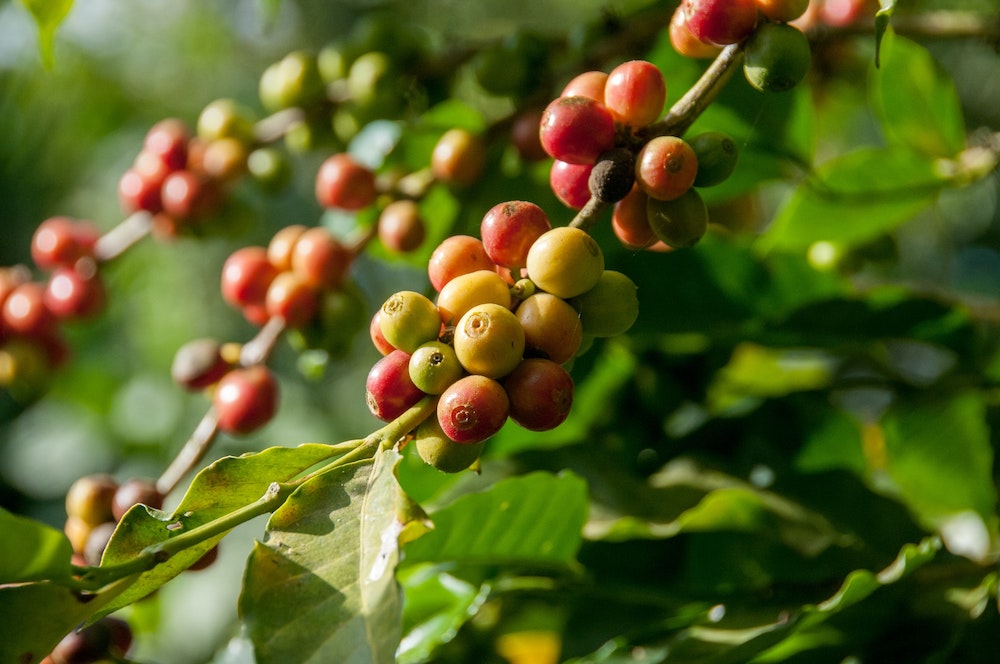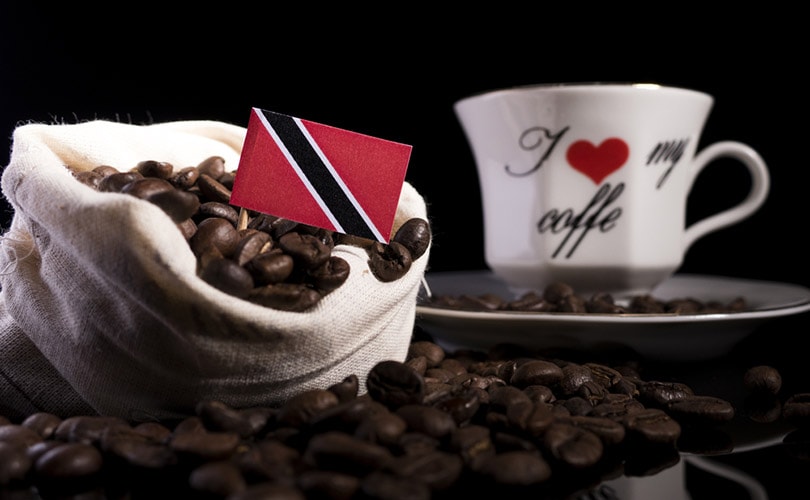
Madagascar might not be the first country you think of when you hear the word coffee, but it has an interesting and somewhat unique coffee history. Madagascar has also recently become one of the world’s leading coffee-producing countries, and the coffee they produce has been improving in quality for quite a while.
Unfortunately, Madagascar’s history is also the history of colonialization and the deep scars that come with it. This article will briefly give you the history of coffee in Madagascar, covering the origins of their coffee tradition, the modern production, and tips for purchasing Madagascar coffee. Let’s begin.

Madagascar Geography
Madagascar is the fourth largest island in the world and the second-largest island country. It is located off the eastern coast of Africa and is one of the most recognizable landmasses on the world map.
Located in the central band between the tropic of cancer and the tropic of Capricorn, Madagascar’s climate is perfect for growing coffee. The tropical regions are so conducive for coffee farming that sometimes people refer to this area of the Earth as the “coffee belt.” Coffee thrives in the humid, hot environments around the equator, and Madagascar provides both.
Another essential element for growing coffee is altitude. Some coffee varietals do better in high-altitude environments due to the extended maturation process in low-oxygen environments coupled with the altered soil quality and drainage characteristics that exist at higher elevations. Madagascar wins again for coffee production since there is plenty of high-altitude farmable land available.

Madagascar Coffee History
Coffee has a long history in Madagascar, which is unsurprising because of its favorable geography and climate. It’s commonly thought that coffee was initially brought to Madagascar from the area that is modern-day Ethiopia approximately 500,000 years ago via a single species of coffee plant. Since then, about 60 varieties of coffee have mutated and developed that can be found across the island, thanks to the happenstance spreading of Madagascar’s wildlife that uses the coffee plant as a food source.
Skipping over tens of thousands of years of natural development, the human tradition of coffee in Madagascar was jumpstarted by the arrival of French colonists in the late 1800s. European coffee demand was increasing, and Madagascar’s specific varieties proved to be a huge hit with the colonists. Exports of coffee rose, and the French-controlled the coffee production in Madagascar until Malagasy independence in 1960.

Throughout these 60 years, coffee quickly became one of the primary Malagasy exports. One of the native coffee species of the region – an Arabica coffee original from Bourbon Island – was extremely popular in Europe and drove demand to new highs. Combined with the French colonists’ new agricultural practices, this demand caused Madagascar’s coffee production to increase rapidly.
Madagascar’s coffee production peaked in the 1980s and early 1990s. At its height, the coffee industry employed almost 25% of Madagascar’s population and made up about half of its agricultural exports.
Unfortunately, dependence on a single industry is a dangerous position to be in, and Madagascar discovered precisely why in the late 1990s when the global price of coffee plummeted, crippling the Malagasy economy. Coffee never returned to the glorious highs of the 1980s, and the effects are still felt today.
Present-Day Madagascar Coffee Production
Present-day Malagasy coffee production is approximately 90% Robusta and 10% Arabica. Robusta coffee has a bad reputation due to its strong, borderline bitter flavor profile. We think this reputation is well-deserved, but you should also be aware that Robusta beans are used in blends with great success. If you’re drinking a single bean type, Arabica is indisputably the more pleasant experience.
Coffee production in Madagascar has become increasingly focused on growing Arabica beans rather than Robusta recently, although Robusta still dominates the farming effort. Since Arabica makes up only a small 1-in-10 fraction of Malagasy coffee production, it is mostly used in the country’s specialty coffee.

Most of the coffee produced in Madagascar today is consumed within the country, with only 20% going to exports. Although coffee exports are a mere shadow of their former volume, Malagasy coffee culture is still thriving. Coffee is pervasive in Madagascar’s culture and is sold throughout the country.
Coffee the Madagascar way
If you want to drink coffee like the Malagasy, you need to make it strong – very strong. Malagasy coffee is usually served black or with condensed milk when you’re looking for a sweet treat, but the coffee is always brewed strong. Street vendors make their coffee by pan-roasting local green pans on the spot. The result is a uniquely fresh, strong cup of coffee that is hard to imitate by any other means.
This is where the Robusta beans really shine. Despite their stronger taste, they don’t taste bad, and the higher caffeine content is popular among the Malagasy for its increased energy-boosting effects. The full-bodied, strong-flavored Robusta variety is at home in hand-roasted traditional Malagasy coffee. Leaning into the bold flavor has proven to be the right decision as street vendors can make a living selling their coffee to passersby.

Purchasing tips
If you want to purchase Madagascar coffee, your primary choice is between the more widespread Robusta beans and the rarer but higher quality, Arabica coffee. We weren’t sure initially which we preferred to recommend, so we’ll give you both of our lines of reasoning and let you decide.
Arabica beans are generally more well-regarded than Robusta because of the more balanced, delicate flavor. Most coffee is made from Arabica beans, and the reason is simple: most people prefer the taste. You might wonder why we don’t simply recommend the Arabica and be done with it. The reason is authenticity. Most coffee consumed in Madagascar is Robusta and if you want to experience the coffee the way the Malagasy do, buy Robusta.

Conclusion
If you’re not familiar with the long and interesting coffee history of Madagascar, you might be surprised to learn of its rise to prominence in the latter half of the twentieth century. Because Malagasy coffee is a much smaller industry than it used to be, it’s not surprising that it flies under the radar compared to coffee production giants like Brazil and Honduras. Ignoring Madagascar’s coffee because of its relative unpopularity would be a mistake since it is unlike many other origins and definitely worth a try.
Unfortunately, coffee’s history in Madagascar is entwined with the troubling history of colonization that plagues much of modern human history. From our present-day perspective, we can appreciate the history of Malagasy coffee while realizing for almost 60 years, Madagascar’s coffee production has been under the complete control of Madagascar’s people. The coffee boom of the 1980s was tragically short-lived, but it gave birth to the smaller but higher-quality coffee industry present today in Madagascar.
SEE ALSO: What are the best African coffee brands?
Featured Image: BERMIX STUDIO, Shutterstock















